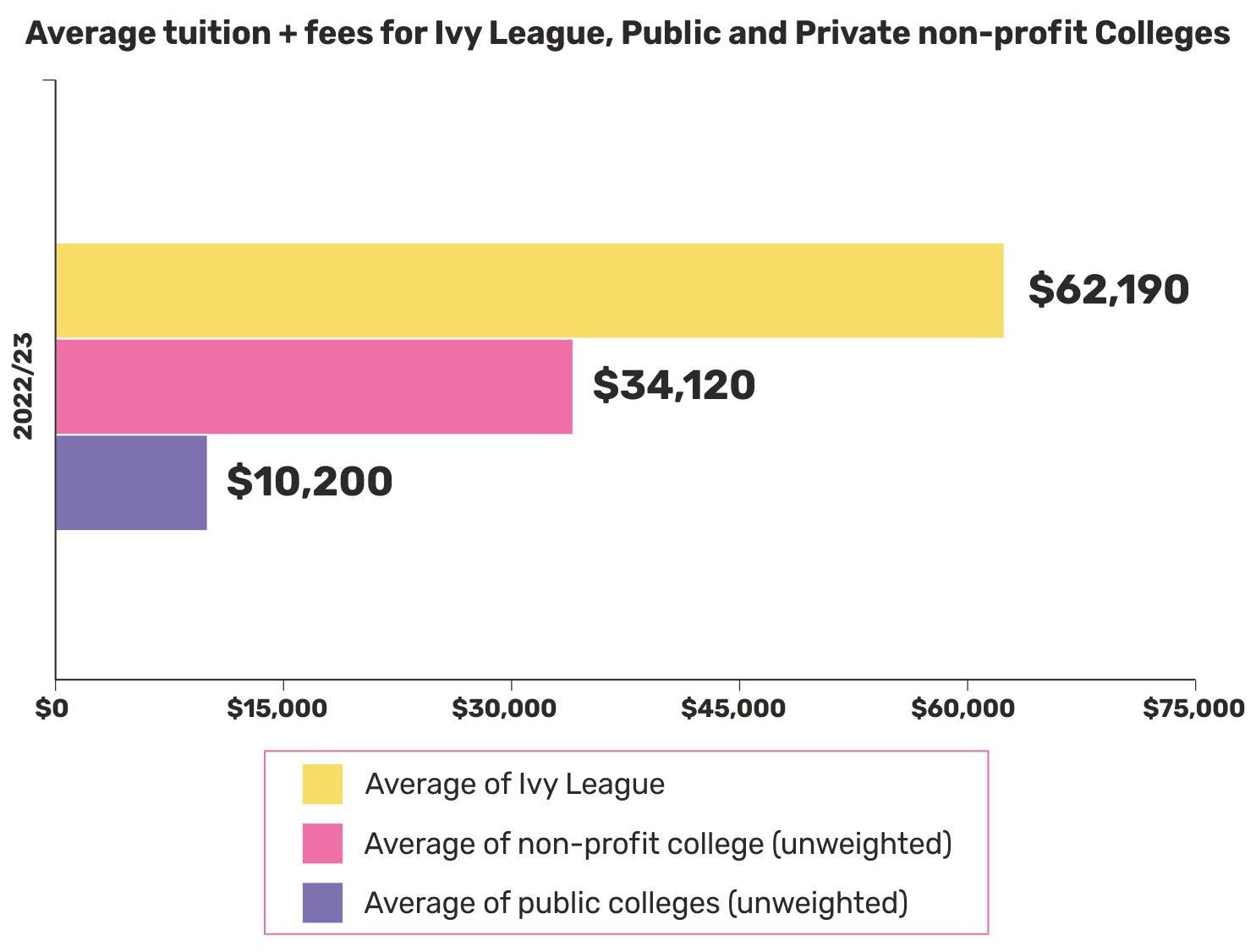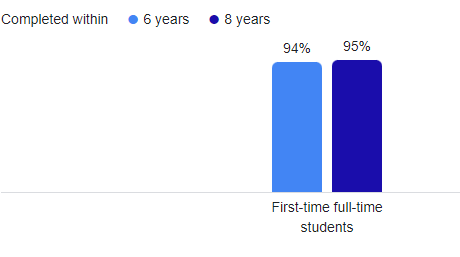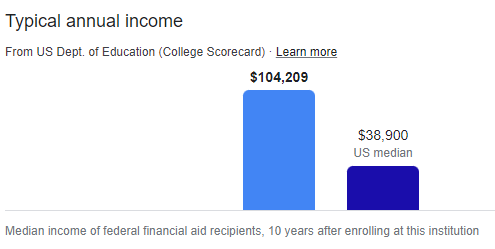True, Ivy League schools provide a unique and superior education. It is also true that they provide students with the greatest infrastructure, an appropriate learning environment, and a more promising future. These institutions are also known for their ‘sky-touching’ high tuition, rigorous academic requirements, low acceptance rates, and substantial financial endowments.
However, you may be surprised to learn that several non-Ivy League universities provide similar services and can compete directly with the Ivies. In this article, we shall discuss some of the best non-Ivy League Schools which are equally competitive and hard to crack!!

Top Non-Ivy League Schools
1. Massachusetts Institute of Technology (MIT)
Acceptance rate: 4%
Undergraduate enrollment: 4500
Required SAT/ACT: 1510-1580 SAT, 34-36 ACT
First on our list is the Massachusetts Institute of Technology (MIT), which ranks high on the best non-Ivy League schools list in the country. The school employs a hands-on method of learning that equips students with the skills necessary to apply creativity to solving problems in the real world. Students at MIT have access to cutting-edge research facilities of the highest caliber as well as the Independent Activities Program, a January term with unique classes and projects.
In terms of enrolment, the university’s engineering school is the biggest, but MIT also receives good rankings for non-tech majors like political science and economics.
2. Stanford University
Acceptance rate: 4%
Undergraduate enrollment: 7800
Required SAT/ACT: 1470-1570 SAT, 34-35 ACT
One of the best non-Ivy universities, Stanford University is known for its emphasis on technology and the liberal arts. It is also known as a renowned research university, thanks to the institution’s dedication to academic excellence.
MIT offers small class sizes—nearly 70% of classes have less than 20 students—as well as the chance to collaborate closely with instructors. Students are encouraged to take part in their teachers’ research projects and look for mentorship opportunities while pursuing their degrees.
3. University of Chicago
Acceptance rate: 6%
Undergraduate enrollment: 6,306
Required SAT/ACT: 1510-1580 SAT, 33-35 ACT
Established in 1890, the university holds the sixth position in the 2022–2023 edition of Best Colleges in National Universities. The campus, which spans 217 acres, is known for academic fields such as engineering, arts, and medicine.
Students who attend the institution pay an average of $62,940 in tuition and take part in a core curriculum that is rich in interdisciplinary studies and difficult, cutting-edge work in their major. It is best suited for innovative thinkers and dreamers because it places a strong emphasis on critical thinking and free thought.
4. Vanderbilt University
Acceptance rate: 6.7%
Undergraduate enrollment: 7,057
Required SAT/ACT: 1480-1570 SAT, 34-35 ACT
Vanderbilt University Medical Center is widely regarded as one of the best in the country. Aside from that, it is well-known among students for its robust academic offerings in the arts, social sciences, engineering, and sciences.
Furthermore, the university is well-known for its research opportunities, cutting-edge infrastructure, and collaborations with world-class universities.
Its multidisciplinary education allows students to investigate several subject areas while collaborating with peers and academic members from varied backgrounds.
The median starting salary of alumni is $63,600, according to a US News study. An excellent starting point.
5. California Institute of Technology (Caltech)
Acceptance rate: 7%
Undergraduate enrollment: 900
Required SAT/ACT: 1530-1580 SAT, 35-36 ACT
The California Institute of Technology, popularly known as Caltech, is a well-known private research institution in Pasadena, California. It has established itself as one of the world’s top colleges for Space Science.
It has six academic divisions:
- Biology and biological engineering
- Chemistry and chemical engineering
- Engineering and applied science
- Geology and planetary sciences
- Humanities and social sciences
- Physics, mathematics and astronomy
Caltech, home to the Jet Propulsion Laboratory – the nation’s foremost facility for robotic space exploration, is a great choice for you if you believe you would thrive on a smaller campus with a strong emphasis on science and engineering.
Graduation Rate


The university’s emphasis on interdisciplinary collaboration and hands-on learning, along with the small size of the student population, results in a highly individualized educational experience that equips students for success in their chosen disciplines.
6. Northwestern University
Acceptance rate: 8%
Undergraduate enrollment: 9,900
Required SAT/ACT: 1470-1570 SAT, 34-35 ACT
One of the top universities in the United States for both learning and research is Northwestern University. The university, which is based in Evanston, Illinois, offers 4,000 undergraduate courses through 6 undergraduate colleges, so it can accommodate most educational requirements.
The University is quite selective and places a strong emphasis on research which makes it a top choice if you are passionate about undergraduate research.
Despite the fact that Northwestern University offers several distinct undergraduate degrees, the school is also widely recognized for its journalism program, which has produced notable graduates like Pulitzer Prize winner Lisa Gartner and author George R. R. Martin.
Its alumni are leaders in cutting-edge research and are also well-regarded in several fields. The inclusive and truly diversified environment provided by Northwestern University makes it an excellent place to learn.
7. Johns Hopkins University
Acceptance rate: 8%
Undergraduate enrollment: 6,256
Required SAT/ACT: 1510-1570 SAT, 34-35 ACT
John Hopkins University was the first research institution to be founded in the United States and is currently ranked 9th in the nation by U.S. News & World Report.
John Hopkins University is a well-known choice for students interested in science, medicine, and public policy. For more than 20 years, the Bloomberg School of Health has held the top spot among public health schools in the nation. Pre-med students would do well here, but any student interested in science and research would also do well.
There are more than 50 undergraduate majors available, and there are equally strong programs in business, music, the arts, and more.
8. Duke University
Acceptance rate: 9%
Undergraduate enrollment: 7000
Required SAT/ACT: 1460-1550 SAT, 33-35 ACT
Located in Durham, North Carolina, also referred to as the ‘Ivy of the South’, Duke University is a highly selective school as its acceptance rate rivals that of the Ivies. Duke looks for students who are bold, goal-driven, and think creatively!!
The 53 majors and 52 minors offered by Duke University give enrolled students a wide range of possibilities when it comes to designing their own educational experience. In fact, the school provides a curriculum called Program II that allows interdisciplinary-interested students to create their own unique degree programs.
To provide you with a more comprehensive outlook and options, we are attaching a table for you to select your best non-Ivy League school based on your area of interest!!
9. Washington University in St. Louis
Acceptance rate: 14%
Undergraduate enrollment: 7822
Required SAT/ACT: 1500-1570 SAT, 33-35 ACT
At Washington University, students have access to four undergraduate schools, more than 100 areas of study, and the unique liberty of choosing courses from many academic disciplines.
Washington University is associated with 24 Nobel Laureates who attended the institution or did award-winning research there. This has been possible because the university encourages students to push the limits of learning and wonder what else there is to learn. With significant financing for research projects and resources devoted to fostering scientific discovery, it is famous for its strong research concentration.
10. The University of California, Los Angeles (UCLA)
Acceptance rate: 11%
Undergraduate enrollment: 32,119
Required SAT/ACT: 1290-1520 SAT, 29-32 ACT
Known as the Public Ivy, the University of California, Los Angeles, is ranked among the most prestigious and competitive institutions in the US.
Less than 9 applicants out of every 100 are accepted at UCLA, making it an extremely difficult school. It has a student-to-faculty ratio of 18:1, and 47.8% of its classes have fewer than 20 students.
Apart from excellent academics, students must demonstrate community commitment and a strong drive to bring change if they wish to make the most of this institute.
The university offers majors in a variety of fields, including computer and information sciences, psychology, engineering, mathematics, statistics, biomedical sciences, and more!!

Gaining entry into America’s top-notch universities can be a tough affair.
Moonpreneur is dedicated to transforming conventional education, preparing the next generation with comprehensive learning experiences. Our Innovator Program equips students with vital skills in AI/ML, Robotics, Coding, Game Development, and App Development, fostering entrepreneurship through hands-on learning. This initiative aims to cultivate the workforce of tomorrow by integrating innovative technologies and practical skills in school curriculums.
Register for a 60-minute free workshop today!

























Can you provide examples of non-Ivy League colleges with strong specialized programs or unique strengths?
My cousin was looking for colleges that have unique strengths and he chose Rochester Institute of Technology . He also came across other colleges with the same powers: Emory, Georgetown for law and international relations, and UC Berkeley/UCLA.
Washington University lacks the extensive endowments and resources of Ivy League institutions, which is impacting research funding and facilities
Rice University of Houston is known for its excellent research teaching, you should add it in your list.